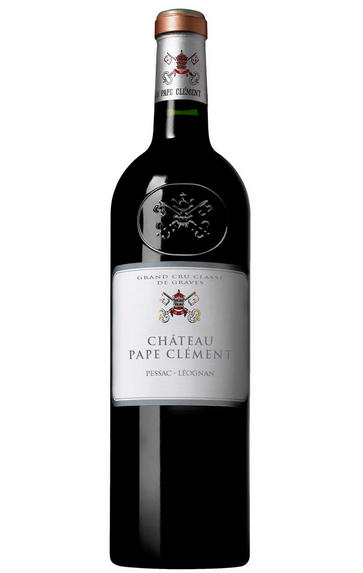
2020 Château Pape Clément, Pessac-Léognan, Bordeaux
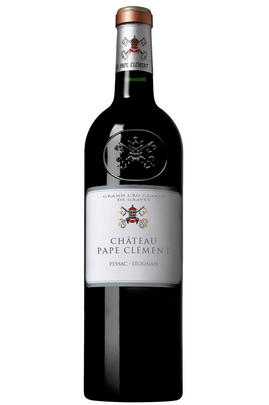
Critics reviews
Drink from 2025 to 2060
Neal Martin, Vinous (May 2021)
Drink from 2025 to 2045
Antonio Galloni, Vinous (June 2021)
Drink from 2028 to 2044
Jane Anson, Decanter (April 2021)
Drink from 2028 to 2060
Lisa Perrotti-Brown MW, Wine Advocate (May 2021)
Drink 2029 - 2044
Jancis Robinson MW, jancisrobinson.com (April 2021)
Jeb Dunnuck, jebdunnuck.com (May 2021)
Drink 2030 - 2050
Michael Schuster, The World of Fine Wine (May 2021)
About this WINE
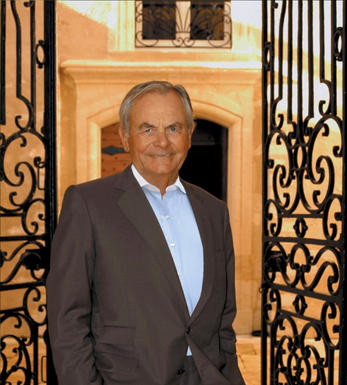
Chateau Pape Clement
Château Pape Clément is a Cru Classé Graves property that has one of the oldest documented histories of any Bordeaux vineyard, having been planted in 1300 by Bernard de Groth, the future Pope Clément V. In 1939 the estate was bought by the Montagne family and is now owned and run by Léo Montagne.
Pape Clément is located in the Bordeaux suburb of Pessac and consists of a chai and 32 hectares of vineyards, planted with Cabernet Sauvignon (60%), Merlot (40%) and small amounts of Sauvignon Blanc, Sémillon and Muscadelle.
The quality of the wines at Pape Clément slipped in the 1960s and 70s, largely because of under-investment. Bernard Magrez was appointed as general manager in 1985 and he turned Pape Clément's fortunes around. He introduced more rigorous selection in the vineyards, as well as installing stainless steel vats and raising the percentage of new oak casks used in the maturation process.
Pape Clément now produces one of the finest clarets in Pessac-Léognan.
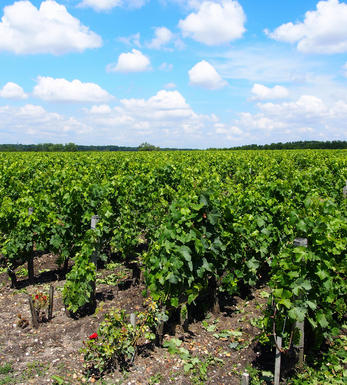
Pessac-Leognan
In 1986 a new communal district was created within Graves, in Bordeaux, based on the districts of Pessac and Léognan, the first of which lies within the suburbs of the city. Essentially this came about through pressure from Pessac-Léognan vignerons, who wished to disassociate themselves from growers with predominately sandy soils further south in Graves.
Pessac-Léognan has the best soils of the region, very similar to those of the Médoc, although the depth of gravel is more variable, and contains all the classed growths of the region. Some of its great names, including Ch. Haut-Brion, even sit serenely and resolutely in Bordeaux's southern urban sprawl.
The climate is milder than to the north of the city and the harvest can occur up to two weeks earlier. This gives the best wines a heady, rich and almost savoury character, laced with notes of tobacco, spice and leather. Further south, the soil is sandier with more clay, and the wines are lighter, fruity and suitable for earlier drinking.
Recommended Châteaux: Ch. Haut-Brion, Ch. la Mission Haut-Brion, Ch. Pape Clément, Ch Haut-Bailly, Domaine de Chevalier, Ch. Larrivet-Haut-Brion, Ch. Carmes Haut-Brion, Ch. La Garde, Villa Bel-Air.
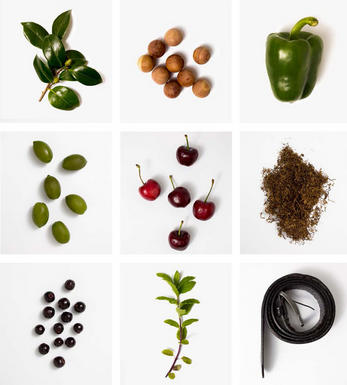
Cabernet Sauvignon Blend
Cabernet Sauvignon lends itself particularly well in blends with Merlot. This is actually the archetypal Bordeaux blend, though in different proportions in the sub-regions and sometimes topped up with Cabernet Franc, Malbec, and Petit Verdot.
In the Médoc and Graves the percentage of Cabernet Sauvignon in the blend can range from 95% (Mouton-Rothschild) to as low as 40%. It is particularly suited to the dry, warm, free- draining, gravel-rich soils and is responsible for the redolent cassis characteristics as well as the depth of colour, tannic structure and pronounced acidity of Médoc wines. However 100% Cabernet Sauvignon wines can be slightly hollow-tasting in the middle palate and Merlot with its generous, fleshy fruit flavours acts as a perfect foil by filling in this cavity.
In St-Emilion and Pomerol, the blends are Merlot dominated as Cabernet Sauvignon can struggle to ripen there - when it is included, it adds structure and body to the wine. Sassicaia is the most famous Bordeaux blend in Italy and has spawned many imitations, whereby the blend is now firmly established in the New World and particularly in California and Australia.


Buying options
Add to wishlist
Description
Cabernet Sauvignon 50%, Merlot 50%
Jeanne Lacombe, the estate’s technical director, considers the quality of the fruit in 2020 among the best ever here – especially the Cabernet Sauvignon, with its velvety tannins and remarkably dense texture. The sample tasted was impressively constructed, complete with the château’s signature smoky and toasty aromas. The palate is rich and chocolatey, with savoury miso notes along with vibrant blueberry and blackberry flavours. There is an impressive immediacy, but this is for the long haul, too.
Drink 2025-2040
wine at a glance
Delivery and quality guarantee